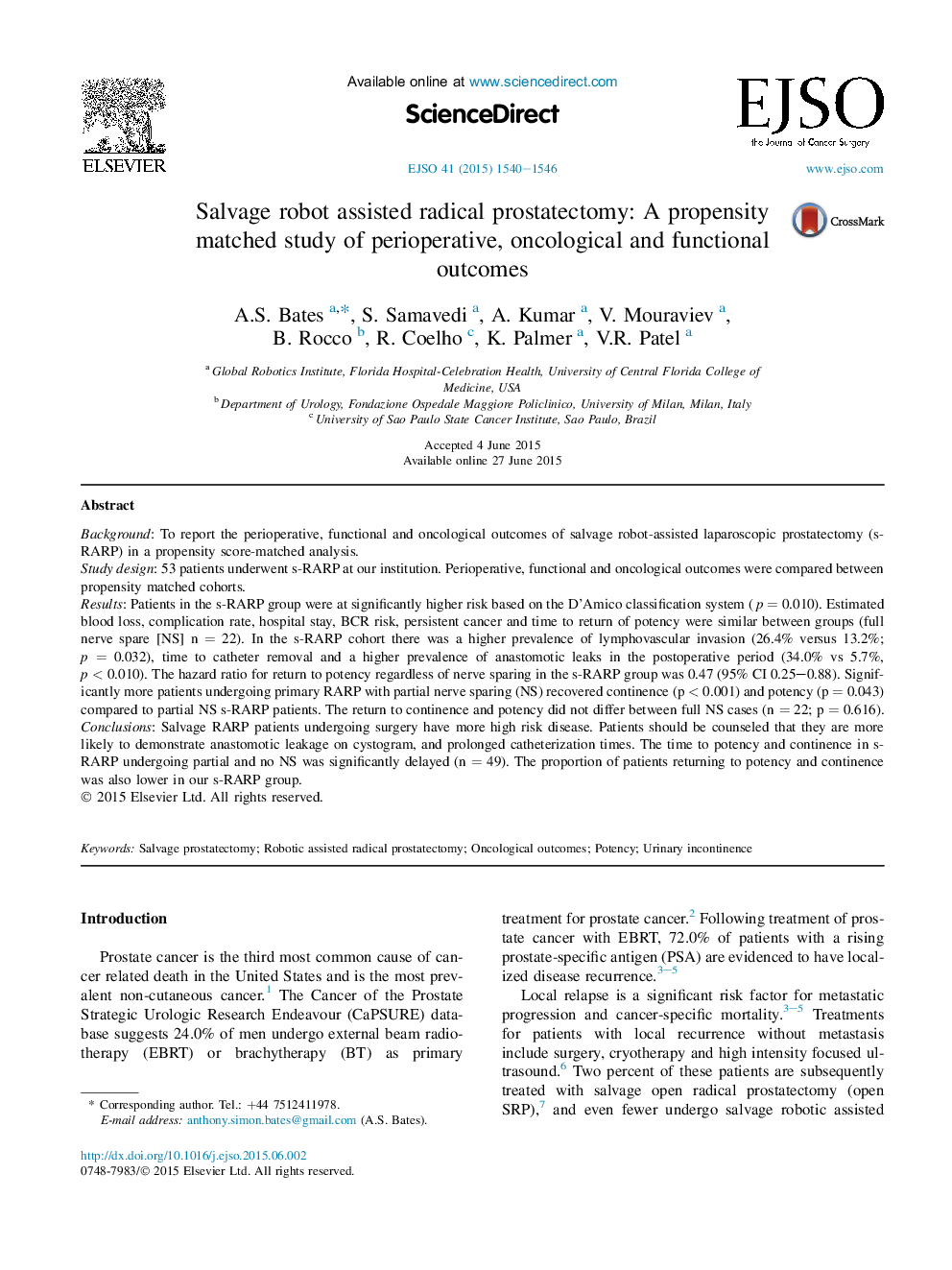| Article ID | Journal | Published Year | Pages | File Type |
|---|---|---|---|---|
| 3984666 | European Journal of Surgical Oncology (EJSO) | 2015 | 7 Pages |
BackgroundTo report the perioperative, functional and oncological outcomes of salvage robot-assisted laparoscopic prostatectomy (s-RARP) in a propensity score-matched analysis.Study design53 patients underwent s-RARP at our institution. Perioperative, functional and oncological outcomes were compared between propensity matched cohorts.ResultsPatients in the s-RARP group were at significantly higher risk based on the D'Amico classification system (p = 0.010). Estimated blood loss, complication rate, hospital stay, BCR risk, persistent cancer and time to return of potency were similar between groups (full nerve spare [NS] n = 22). In the s-RARP cohort there was a higher prevalence of lymphovascular invasion (26.4% versus 13.2%; p = 0.032), time to catheter removal and a higher prevalence of anastomotic leaks in the postoperative period (34.0% vs 5.7%, p < 0.010). The hazard ratio for return to potency regardless of nerve sparing in the s-RARP group was 0.47 (95% CI 0.25–0.88). Significantly more patients undergoing primary RARP with partial nerve sparing (NS) recovered continence (p < 0.001) and potency (p = 0.043) compared to partial NS s-RARP patients. The return to continence and potency did not differ between full NS cases (n = 22; p = 0.616).ConclusionsSalvage RARP patients undergoing surgery have more high risk disease. Patients should be counseled that they are more likely to demonstrate anastomotic leakage on cystogram, and prolonged catheterization times. The time to potency and continence in s-RARP undergoing partial and no NS was significantly delayed (n = 49). The proportion of patients returning to potency and continence was also lower in our s-RARP group.
